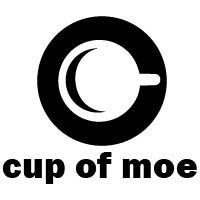We may earn money or products from the companies mentioned in this post.
Frederick is an eminent yet humble brain surgeon, hoping to make some positive contribution to the world. One day, after giving a lecture in an American university on the central nervous system — and stating, emphatically, that dead nerves cannot be restored — he is approached by a man, a representative of his grandfather’s estate. Though long estranged, Frederick has been left the entirety of his grandfather’s estate, in central Europe. Frederick departs at once, leaving behind his socialite fiancee Elizabeth. Once at the family estate, Frederick meets a trio of assistants, discovers his grandfather’s greatest treasure, deflects a constable who is wary of old ghosts being dug up, and walks the fine line between genius and madness to make his own mark on the world.
Did I mention that Frederick’s last name is Frankenstein?
Mel Brooks’ “Young Frankenstein” (1974, 20th Century Fox) is the story of a descendant of the infamous mad scientist who wants absolutely nothing at all to do with his deranged ancestor — even changing the pronunciation of his name to Fronk-en-schteen — but finds his destiny cannot be escaped. With Gene Wilder as Frederick (who came up with the core idea & co-wrote the screenplay with Brooks), Peter Boyle as The Monster, Marty Feldman as hunchbacked, bug-eyed Igor, Cloris Leachman as imposing housekeeper Frau Blücher (deranged neighing), Teri Garr as vivacious assistant Inga, Kenneth Mars as suspicious Inspector Klemp, and Madeline Kahn as Frederick’s financier fiancee Elizabeth, all at the top of their game, the laughs come almost non-stop. And the film employs multiple forms of humor, to keep the audience on their toes: absurdity, charades, double entendres, facial expressions silently commenting on goings-on, improv, physical comedy, running gags, unexpected appearances (Gene Hackman in a rare comedic role as the blind hermit), wordplay, and more. Indeed, the cast enjoyed working with each other so much that Wilder kept coming up with scenes to add in, though almost half the scenes wound up being cut to give the film a reasonable runtime.

But the film is also a loving homage to the Universal “Frankenstein” films. Most obvious is Elizabeth’s “Bride of Frankenstein”-inspired look at the end, teased earlier when her hair developed two long white streaks just before experiencing The Monster’s schwanstücker (which, full disclosure, happened nonconsensually…the first time). Inspector Klemp, with his wooden arm, is a reference to “Son of Frankenstein’s” Inspector Krogh, who bears an artificial arm, his original having been “ripped out by the roots” in an encounter with The Monster many years earlier. Cinematographer Gerald Hirschfeld helped make Brooks’ idea to shoot the whole thing in black-and-white a reality, and longtime Brooks collaborator John Morris provided a score worthy of any classic science-horror film. Perhaps most impressive, though, is that Mel Brooks was able to get in touch with Kenneth Strickfaden, the electrician and special effects creator who had assembled all the lab equipment for the original Universal Frankenstein films (and so many other classic mad scientist laboratories), and got him to provide the effects for his film, using the very same equipment used in those Universal films. And this time, Strickfaden would receive on-screen credit for doing so!
Filled with countless memorable lines and scenes, this film had had a huge impact on pop culture: this is where the “mad scientist’s assistant named Igor” came from (in the original films Frankenstein’s assistant was named either Fritz or Ygor), Aerosmith’s “Walk this Way” is a reference to one of Igor’s lines, and the music for the “Dramatic Chipmunk” meme is from this film! Yet perhaps the greatest aspect of this film is its message, which — like everything else — both homages and parodies the message of the original “Frankenstein.” In every other version of the Frankenstein story, the Doctor is repulsed by his creation, rejects it, which is partly why The Creature lashes out and causes so much destruction. For daring to meddle in God’s domain, Frankenstein’s hubris dooms all those around him. But here, that gets turned on its ear, allowing for a much happier ending.
This post may contain affiliate links. We are a participant in affiliate programs such as the Amazon Services LLC Associates Program, an affiliate advertising program designed to provide a means for us to earn fees by linking to Amazon.com and affiliated sites. However, all products are thoroughly tested and reviews are honest and unbiased.
